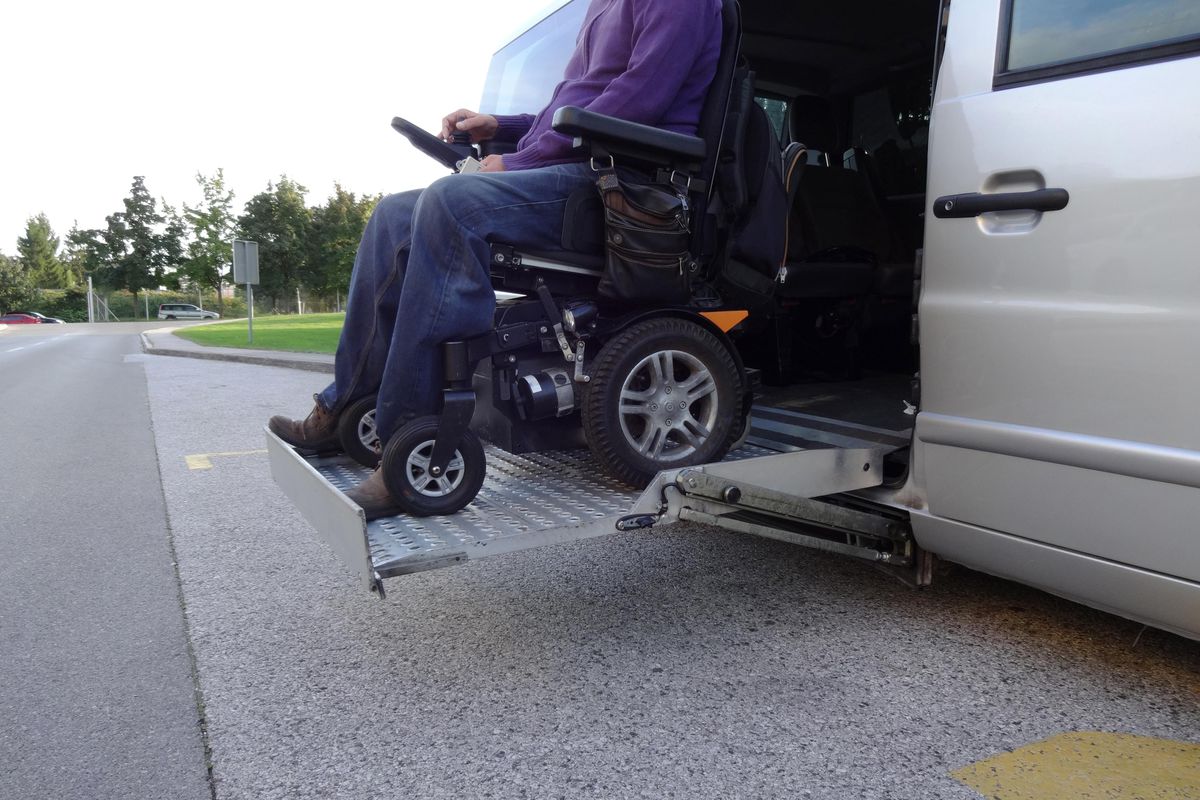Wheelchair Access enabled by ADA
Getty
Done well before the age of autonomy, the Americans with Disabilities Act of 1990 or ADA is a civil rights law that prohibits discrimination based on disability. The act had three major parts: employment, public transportation, and public accommodation (commercial properties). The overall intent of the law is to introduce fairness for the disabled by providing equity and “reasonable accommodation.” Economists are concerned with public policy which imposes broad regulations because of “ the unintended consequences.” Examples often cited include the argument that increases in the minimum-wage actually reduces the demand for workers. Thus, the policy actually hurts the workers it is meant to help. Indeed for the ADA, Thomas DeLeire from Georgetown University has made a similar argument with his article “The Unintended Consequences of the Americans with Disabilities Act.”
Whatever its utility, ADA has been the law of the land for almost 20 years. During this time, millions (if not billions) of dollars have been spent in building ADA compliant public spaces. Practically speaking, the United states has made a visible and significant investment in wheelchair access. For conventional autonomous systems in the area of public transportation, ADA compliance is a reality, and must be obeyed. In fact, “Jacksonville’s Journey In Engaging With Autonomous Vehicle Technology” confirms that the Ultimate Urban Connector (UUC) public transportation project has built ADA compliance as a part of the UUC operational plan.
Moving forward to 2020, Covid-19 is also a reality of the land. “COVID-19: The Digital Economy Change Agent ?” discusses one of the consequences of Covid-19 is to accelerate the virtualization of major economic activities such as education, work, entertainment, telemedicine, and finally shopping. For shopping (ecommerce), there is a necessary connection to delivery, and this is the place where there is a very interesting intersection between ADA and autonomy.
As one scales ecommerce, there is a fundamental need to restructure the delivery pipeline and autonomy can play a large role in all elements. As Will Truck Convoying Be The First Viable Commercial Application For AV Technology ? discusses, the logistics backbone consists of large amounts of cargo moving on the highway network. With limited access highways and relatively simpler use-models, long-haul trucking is increasingly being seen as a viable application for autonomous technology. Last mile solutions are more challenging because of the complexity of driving in urban-like environments, but models such as robo-taxis are being tested by Waymo and others. However, for the ecommerce delivery model, there is a deeper problem. To make a viable business model, one often has to handle the last 100 feet well. As an example, the article “Ford teams with Domino’s, Postmates in Miami to test delivery via autonomous vehicles” describes the conundrum of delivering pizza to apartment buildings.
In addition to the last 100 feet problem, sending a multi-ton vehicle for a local delivery of a pizza is not particularly good from a sustainability point-of-view. With this in mind, a whole range of delivery robots are being developed. Given their size and low-speed, they represent a much lower safety threat, and can be easily scaled to support last mile ecommerce. Most interestingly, they have a form-factor which is quite similar to wheelchairs, and magically, there is a confluence of interests. Thus, one of the “unintended consequences” of the ADA may well be that ADA compliance costs were also a last-mile delivery infrastructure investment.
Is the problem solved ? Not quite.
While the ADA has forced large parts of the private sector to be ADA compliant, cities and towns have not been so successful. “Our Sidewalks Are an Access Nightmare – Let’s fix them, Seattle!” describes the chronic issues of sidewalk disrepair. In addition to a viable sidewalk network, there is also a need for indoor map databases (perhaps automatically generated from crowd sourcing human movement) and indoor location technology (remember GPS does not work), and it would be very nice if there was a simple communication technology with a standard to communicate with doors and elevators. As a part of ADA compliance, these investments are difficult to justify, but as a part of a massive ecommerce delivery engine, perhaps there is a viable economic model. Perhaps something like a small delivery charge can fund all the capital investment. The resulting environment would also enable an automated vehicle wheelchair which has the intelligence to self-navigate to a destination, and the access goals of the ADA may well be fulfilled through the confluence of interests.
Note: Robots at the human scale are somehow more interesting than watching an autonomous vehicle car or truck on the road. Some videos of interesting robotic machines in this space.
- Stair Climbing wheelchair developed by Segway inventor Dean Kamen
- Extreme Wheelchairs
- Amazon Warehouse
- Starship Technologies Robot


















